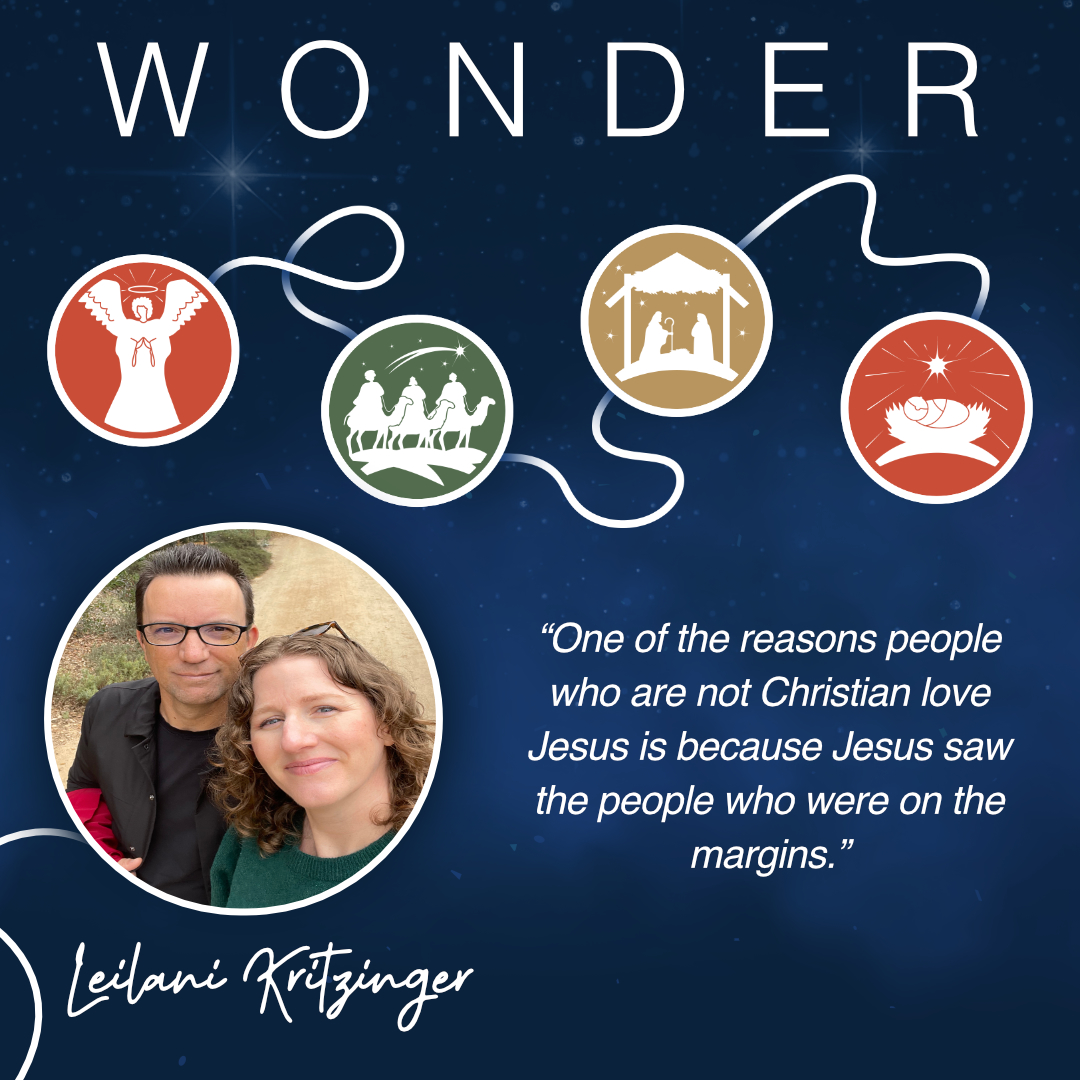I think I was 8 years old that Christmas. One night, my mom turned the lights off and we snuggled up together on a futon mattress on the floor in a nest of pillows and blankets and looked at our Christmas tree.
That year our Christmas tree was just ours. Our family had been through a divorce and my mom and I were living with my grandparents. Looking back, I’m sure Grandma had put up a tree, but the only one I remember was the one in the bedroom I shared with my mom. She took multicolored Christmas lights and zigzagged them across the bedroom wall in the shape of a Christmas tree. By day it looked like a zig zag of green wire; at night it looked like a Christmas tree.
My mom had pretty bad eyesight back then, pre lasik surgery. She joked about coke bottle glasses and a sizable portion of her annual budget went to specialized glasses. Sometimes she wore hard contact lenses and I was fascinated by the rituals of cleaning and soaking and putting them in and taking them out. When she didn’t have her contacts in or her glasses on, she’d say things like, “I can’t hear you; I don’t have my glasses on.” Which is something I say to my kids now.
We were laying there one night and admiring our Christmas tree when my mom handed over her glasses for me to look through. First impression: everything was blurry and ugh it made my eyes hurt! Is that really how my mom sees when she doesn’t have her glasses on? And then I looked at our Christmas tree of lights. Without my mom’s glasses, I saw small, staid, bulb-shaped pinpricks of light. When I put her glasses on, those lights became big starbursts of color. Red! Yellow! Blue! Green!
Glasses off, nice lights.
Glasses on, wowwwww.
See with my eyes, just the usual.
See with my mom’s “eyes,” super pretty!
I’ve been reading and learning a lot about neurodivergence recently, particularly ADHD and autism. I know people who are going through the diagnosis process at the age of 67, 40, 35, 25, 19, 7, and 2. For my 40th birthday, I myself was given the gift of discovering I have ADHD, inattentive type. This knowledge has unequivocally changed my life for the better. People like me have been living under the diagnosis radar, maybe because we have more of the socially palatable traits, maybe because we’ve become really good at masking, finding work arounds, and generally struggling harder than our neurotypical peers.
Why are so many people getting diagnosed now? “It’s a fad,” they say. But that’s not accurate. There have always been many people who are neurodivergent; there just wasn’t language and awareness around it. My grandma, for example. She was insatiably curious, she created intricate systems to track her recipes, she catalogued her extensive personal library with the Dewey decimal system. She couldn’t sit still in church so she always volunteered to get up halfway during the sermon and count the congregants. Looking back, it’s obvious she had ADHD, but she lived in a time when ADHD was commonly thought of as (a) a pathology that (b) pertained mostly to hyperactive little boys. Thus she was denied an understanding of how her mind works and access to tools for navigating a neurotypical world and flourishing without constraint. Now that the internet has removed the gatekeepers, understanding is growing, both in scientific literature and in a burgeoning compendium of lived experience.
Neurodivergent people experience the world uniquely: seeing, feeling, perceiving, and understanding in ways that are not obvious to the neurotypical world. At the same time, being fish out of water comes at a cost. A jaunt into Instagram, TikTok, or Facebook communities of people under the neurodivergent umbrella reveal both sides of the coin—the difficulties caused by a world built for others and the incredible vistas of the neurodivergent brain. It’s a whole new world, a world on the edges.
Bayo Okomolafe writes about his autistic son and his interview with Katherine May who is also autistic:
“Today, popular images of the autistic promote the figure of the wooden automaton, an unfeeling specimen trapped in a cold bubble. May, who thinks of herself as autistic, remembers feeling the world intensely as a child, wondering why everyone else seemed dead to it. My son, Kyah, doesn’t feel ‘detached’ from reality; indeed, in contrast to him, it would seem everyone else is. Kyah is a connoisseur of exotic affective intensities too nuanced for my neurotypical posture to detect. Kyah feels…and he feels intensely. …Kyah performs a queer visuality, one that prefers the sides of the eyes, the peri-feral, to the convenient frontality of ‘white sight.’”
One of the reasons people who are not Christian love Jesus is because Jesus saw the people who were on the margins. He didn’t try to integrate them into the status quo, the way the world works, the way it’s always been done. He built a social structure that legitimized and validated the spectrum of differences in a diverse world.
Just the other day, two of my kids were talking about how sometimes they don’t hear what someone is saying because they are so focused on the effort to look like they’re listening. Making eye contact, holding still, not interrupting—none of these things come naturally when they are truly listening. What’s happening is that they are performing neurotypicality in order not to be sidelined socially and eventually, economically.
“Let the little children come unto me,” Jesus might have said, “and let them lay down, look bored, stim, jump on furniture, flap their hands, repeat the phrases you say, pick at their hangnails, interrupt, take the conversation in what seems to be a different direction but turns out to be a circle of connections; let them look wherever they want to look, doodle all over the book, push their body into yours, listen to music…yes whilethey are listening to you.”
Jesus was talking about children, but if we were to translate that particular demographic to people on the margins today, we could include, among others, these significantly sidelined communities: neurodivergent, fat, women, people of color, disabled, chronically ill. Each of these terms represent an entire world and view of the world known only to the people within those communities.
These days it’s easier than ever to see things from the viewpoints of others. I really encourage you to start following some people in marginalized communities on your social media platform of choice. There is a gamut of people in every community, so I know you’ll be able to find someone who you are drawn to. Think of Jesus and look up from the crowded cacophony of your particular life to see Zaccheus in the sycamore tree. Put on someone else’s glasses and see life through their eyes. Maybe you’ll see starbursts.
For more information, you can watch Caiti Lopez’s BIOS presentation from this summer.
Leilani Kritzinger, writer/singer/mother/wife.

